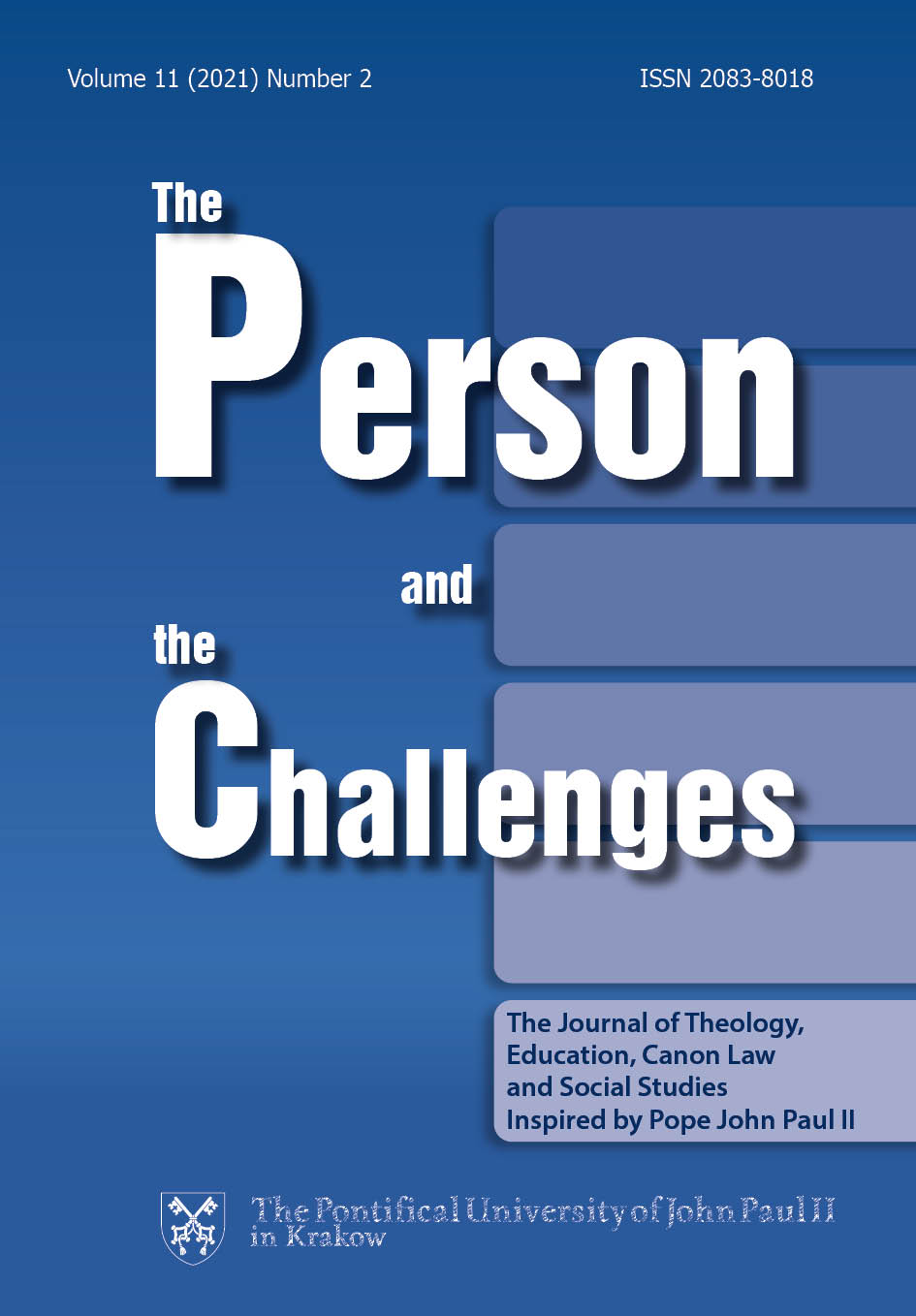Liebe aus dem Internet. Tinder-App als Herausforderung für die pastorale Tätigkeit der Kirche
DOI:
https://doi.org/10.15633/pch.4073Słowa kluczowe:
Tinder, dating apps, digital generation, love, pastoral care of the ChurchAbstrakt
The contemporary, expansive development of the Internet and all kinds of mobile tools has changed all areas of human life. Food, health, entertainment, work, social and family ties – all this and many other areas of life are woven into virtual reality. This has also affected the way of getting to know the chosen ones in life. The mobile world has been offering many digital dating tools to seek love of one’s life”. One of them is the “Tinder” mobile application. It is this tool that the article examines, first by analyzing the phenomenon of this invention and its popularity in the context of social sciences, then by discussing it in the perspective of pastoral theology. In the sections of the article, the author presents the following issues: what Tinder consists of; the usage statistics for this tool; the philosophical-sociological background of online-dating; the characteristics of the generation of Tinder users and – finally – the challenges and inspirations Tinder presents to the pastoral care of the Church.
Bibliografia
Agamben G., Die kommende Gemeinschaft, Berlin 2003, Merve Verlag.
Beck W., Die katholische Kirche und die Medien. Einblick in spannungsreiches Verhältnis, Würzburg 2018, Echter Verlag.
Ben Ze’ev A., Love Online. Emotions on the Internet, Cambridge – New York 2011, Cambridge University Press.
Büsch A., Jesus war kein Chief Digital Evangelist! Digitalisierung als Chance und Herausforderung für die Pastoraltheologie, “Zeitschrift für Pastoraltheologie“ 39 (2019) 1, SS. 7–17.
Castells M., The Internet Galaxy. Reflections on the Internet, Business and Society, New York 2001, Oxford University Press.
Christakis N., Fowler J., Connected. The Amazing Power of Social Networks and How They Shape Our Lives, London 2011, Little – Brown Spark.
Czerska I., Pokolenie “head down” jako konsekwencja smartfonizacji społeczeństwa [The “Head Down” Generation as a Consequence of Smartphonization of the Society], “Research Papers of Wrocław University of Economics“ 459 (2016), SS. 214–221.
De Ruiter J., Weston G., Lyon S., Dunbar’s Number. Group Size and Brain Physiology in Humans Reexamined, “American Anthropologist“ 113 (2011) 4, SS. 557–568.
Eler A., The Selfie Generation. How Our Self-Images Are Changing Our Notions of Privacy, Sex, Consent and Culture, New York, Skyhorse Press 2017.
Frees B., Koch W., ARD/ZDF-Onlinestudie 2018. Zuwachs bei medialer Internetnutzung und Kommunikation, “Media Perspektiven“ 9 (2018), SS. 398–413.
Giussani L., Porta la speranza. Primi scritti, Genua 1997, Marietti.
Gołąb-Andrzejak E., Konsumenci pokolenia Y – nowe wyzwanie dla komunikacji marketingowej [The Y Generation Consumers – a New Challenge for Marketing Communication], “Handel Wewnętrzny“ 2 (2016) 361, SS. 140–151.
Greenfield A., Radical Technologies. Design of Everyday Life, London – New York 2017, Verso Books.
Hoffmann D., Mobile Medien, in: D. Hoffmann, R. Winter (Hg.), Mediensoziologie. Handbuch für Wissenschaft und Studium, Baden-Baden 2018, Nomos Verlag, SS. 221–228.
Jabłońska M., Billewicz K., Pokolenie przełomu w Web 2.0 [Breakthrough generation in WEB 2.0], “Acta Universitatis Lodziensis. Folia Sociologica“ 56 (2016), SS. 83–97.
Morbitzer J., O istocie medialności młodego pokolenia [About the nature of the young generation mediality], “Neodidagmata“ 33/34 (2012), SS. 131–153.
Pirker V., Fragilitätssensible Pastoralanthropologie Impulse aus Praktiken der (Selbst)Inszenierung in Social Media, “Zeitschrift für Pastoraltheologie“ 39 (2019) 1, SS. 44–58.
Rosenfeld M., Reuben T., Searching for a Mate. The Rise of the Internet as a Social Intermediary, “American Sociological Review“ 77 (2012) 4, SS. 523–547.
Schachtner C., Duller N., Kommunikationsort Internet. Digitale Praktiken und Subjektwerdung, in: T. Carstensen, C. Schachtner, H. Schelhowe, R. Beer (Hg.), Digitale Subjekte. Praktiken der Subjektivierung im Medienumbruch der Gegenwart, Bielefeld 2014, Transcript Verlag, SS. 81–154.
Schick L., Auch Jesus würde twittern, “Impulse für die Pastoral“ 1 (2019), SS. 21–22.
Schwab F., Carolus A., Brill M., Irrtümer, die Sie womöglich schon immer über junge Mediennutzende pflegten und nun zu hinterfragen wagen, in: W. Appel, B. Michel-Dittgen (Hg.), Digital Natives. Was Personaler über die Generation Y wissen sollten, Wiesbaden 2013, Springer Gabler Verlag, SS. 179–204.
Simanowski R., Facebook-Gesellschaft, Berlin 2016, Matthes & Seitz Verlag.
Stalder F., Kultur der Digitalität, Berlin 2016, Suhrkamp Verlag.
Tapscott D., Grown Up Digital. How the Net Generation Is Changing Your World, New York 2009, McGraw – Hill Education.
Trültzsch-Wijnen S., Identität, Orientierung und Lebenswelt. Ein mehrdimensionaler Blick auf Situatives Aushandeln von Privatheit im Social Web, Baden-Baden 2018, Springer Professional Verlag.
Ward J., Swiping, Matching. Chatting Self-Presentation and Self-Disclosure on Mobile Dating Apps, “Humanit“ 13 (2016) 2, SS. 81–95.
Wasylewicz M., Transformacja sposobu komunikowania się pokolenia X, Y, Z. Bilans zysków i strat [Transformation of the X, Y, Z Generation Communication Way. The Balance of the Profits and Loss], “Zeszyty Naukowe Wyższej Szkoły Humanitas. Pedagogika” 13 (2016), SS. 133–141.
Pobrania
Opublikowane
Numer
Dział
Licencja
Autorzy publikujący w czasopiśmie udzielają jego wydawcy zgody o następującej treści:
- Autor zachowuje autorskie prawa majątkowe do utworu, a jednocześnie udziela wydawcy czasopisma zgody na jego pierwszą publikację w wersji drukowanej i wersji online na licencji Creative Commons Uznanie autorstwa 4.0 Międzynarodowe oraz zgody na wykonywanie opracowań, w tym przekładów.
- Autor ma możliwość udzielania zgody niewyłącznej na opublikowanie utworu w wersji, która ukazała się w czasopiśmie (np. zamieszczenia go w repozytorium instytucjonalnym lub opublikowania w książce), wraz z informacją o jego pierwszej publikacji w czasopiśmie.
- Autor może umieścić swój utwór online (np. w repozytorium instytucjonalnym lub na swojej stronie internetowej) jeszcze przed zgłoszeniem utworu do czasopisma.

